
Trinity Bastion, officially known as No.1 Bastion (and by many older locals as ‘Vicar’s Bank’ or ‘Tragedy Bank’) was one of four bastions and two demi-bastions built as part of the defensive ramparts that surrounded Gosport town, known as the Gosport Lines. It was constructed, by convict labour, in about 1802 as part of the modifications to the original Bernard de Gomme defences. It protected the southern section of the moat and Haslar gate which gave access along the road to Haslar bridge. Trinity Bastion was remodelled after 1844 when the ramparts were reported to be in a poor state. The gun positions were to be renewed with granite setts embedded in concrete and the embrasures cut and sodded. Tenders for widening and deepening the moats and ditches of the Gosport Fortifications were invited by the War Department in 1845 and again for the ‘second portion’ in 1855. The Construction of a sluice near No.1 Bastion and the extension of the ditch thereto‘ was included in this later tender.

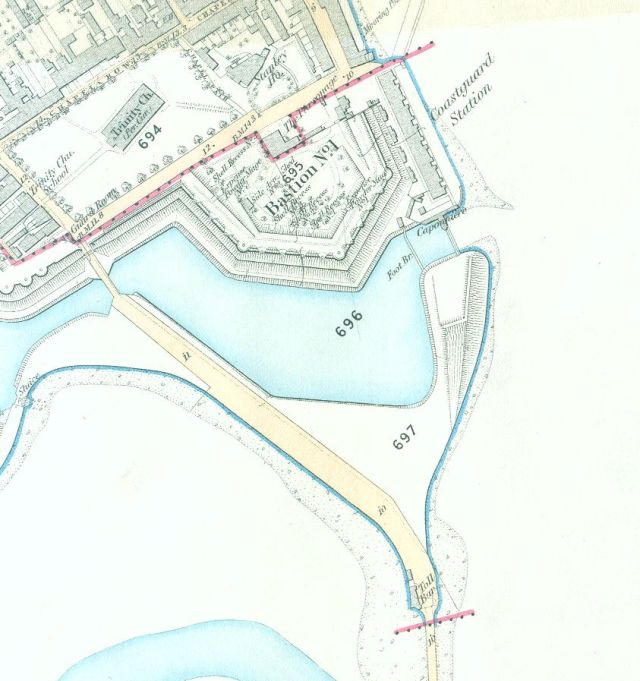
The bastion projects southwards towards Haslar and half of the width of top of the rampart is occupied by its parapet.
Bastion No.1 mounted 14 guns in brick lined emplacements firing over the parapet. The ones at the salient angles are larger than the intermediate ones, giving a wider arc of fire. Most of them have a pivot of iron and a semicircular brick retaining wall. The original armament consisted of 24pr and 18pr smooth bore guns mounted on traversing platforms and standing carriages. A news paper report of 1846 stated that the Gosport ramparts were armed with 18 & 24prs with 56 and 68prs to be added in ‘more commanding situations’. These were mounted by the Royal Artillery stationed at Fort Monckton. In 1860 the armament list shows that the whole of the Gosport Lines held 21 x 24pr 50cwt and 20 x 24pr 20cwt with 17 x 8-inch howitzers, a total 58 guns.
The armament of the bastion was on traversing carriages of the earlier pre-1860 pattern. Regulations stated that iron traversing platforms were preferred as they did not deteriorate as quicky as wooden ones. Iron ones were better in terms of economy and durability however iron platforms were liable to shatter when struck by shot and debris from them was likely to damage or destroy the platforms on either side. It was recommended that iron carriages were to be placed in the parts of fortifications that were least exposed to the enemy’s fire and in sea batteries which could not be approached closer than 1,000 yards. Wooden platfoms be stored locally, then they could be quickly employed in place of the iron ones when attack was expected. It is not known if the platforms on Trinity Bastion were of iron or of wood as there are no surviving lists giving this detail. The gun emplacements were revetted with brick and had a pivot on which the platform traversed. The ones on the salients were centre pivoted, the rest were front pivoted. It is the likely that the salient guns were the heavier calibre. The barrel rested on a carriage which was free to slide backwards up the slope of the platform when it recoiled due to firing.


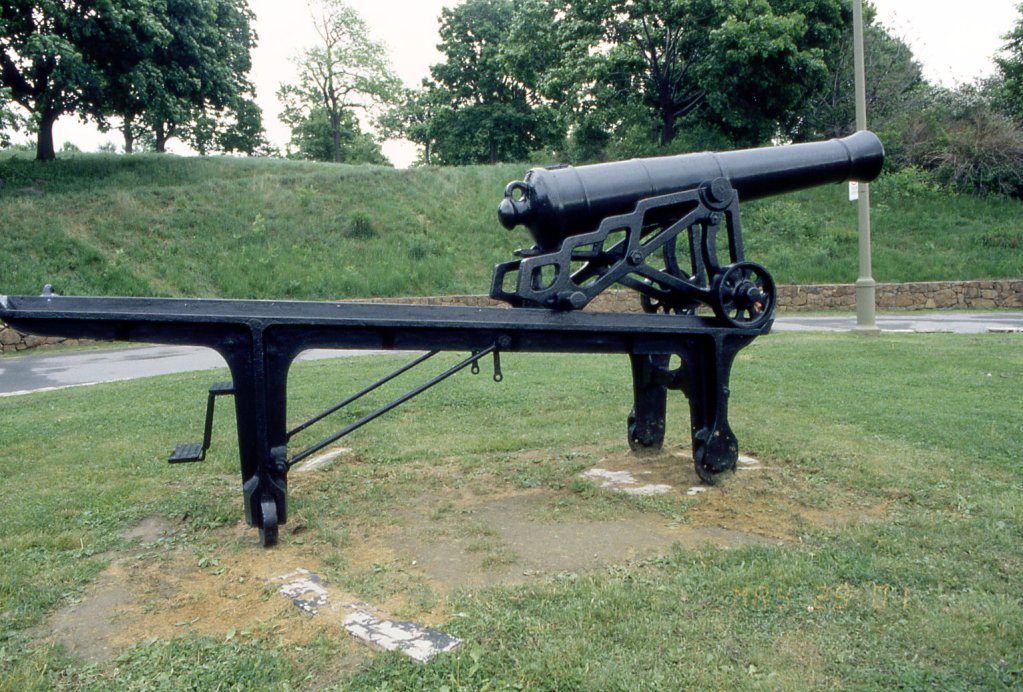
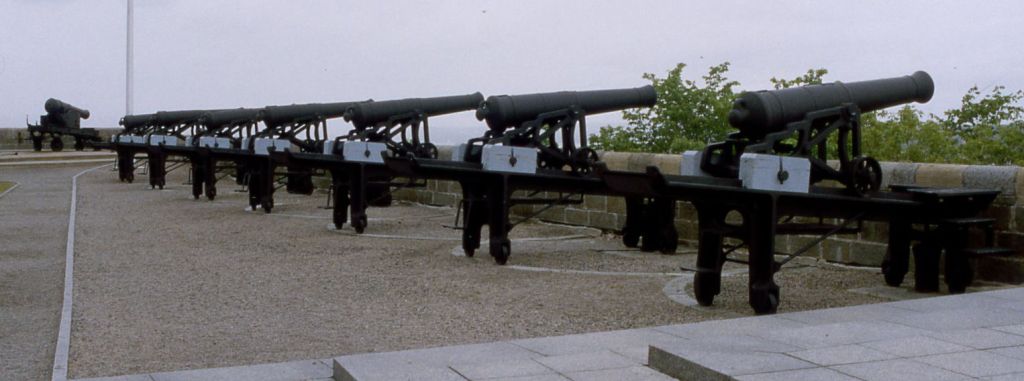
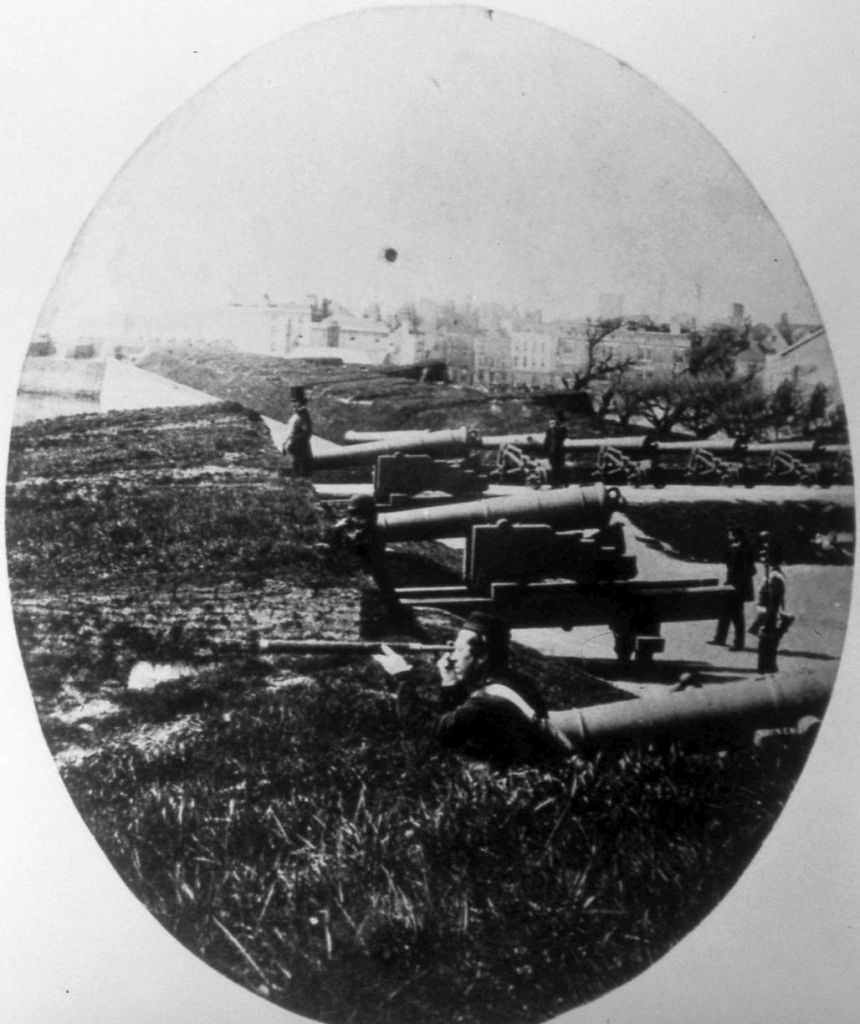
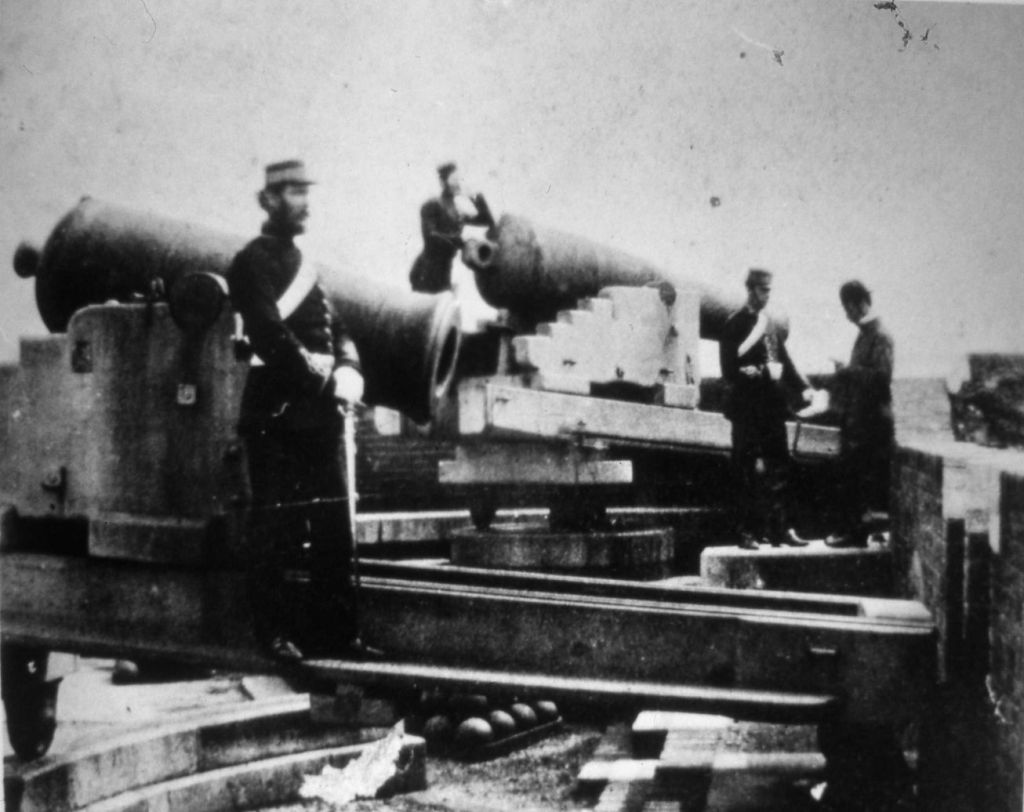
Wooden traversing platforms mounted on the Portsmouth ramparts during the same period
Expense magazines were built into the earth of the rampart behind the terreplein, four for shells and two larger ones for cartridges. These recesses survive but without their doors. Two gun ramps from the lower levels lead up to the terreplein of the bastion on which the guns were mounted. This allowed the guns and platforms to be hauled up to the terreplein for mounting in their emplacements. Ammunition for the whole of the Gosport Town ramparts was stored in a central main magazine at Bastion No.4. When needed 100 rounds per gun was stored locally to the guns in the expense magazines. 18 were to be round shot, 5 common case shot, 5 spherical shot, and 10 grape shot. The cartridges containing black powder were of flannel or paper. Behind the rampart on the lower level was a side arm shed for storing handspikes, sponges, worms and ladles.
The rearward wall of the bastion is a sloping brick retaining wall at its north western end. An entrance gate survives with pillars of brick. After 1853 a small covered way and glacis were constructed south of Bastion No. 1
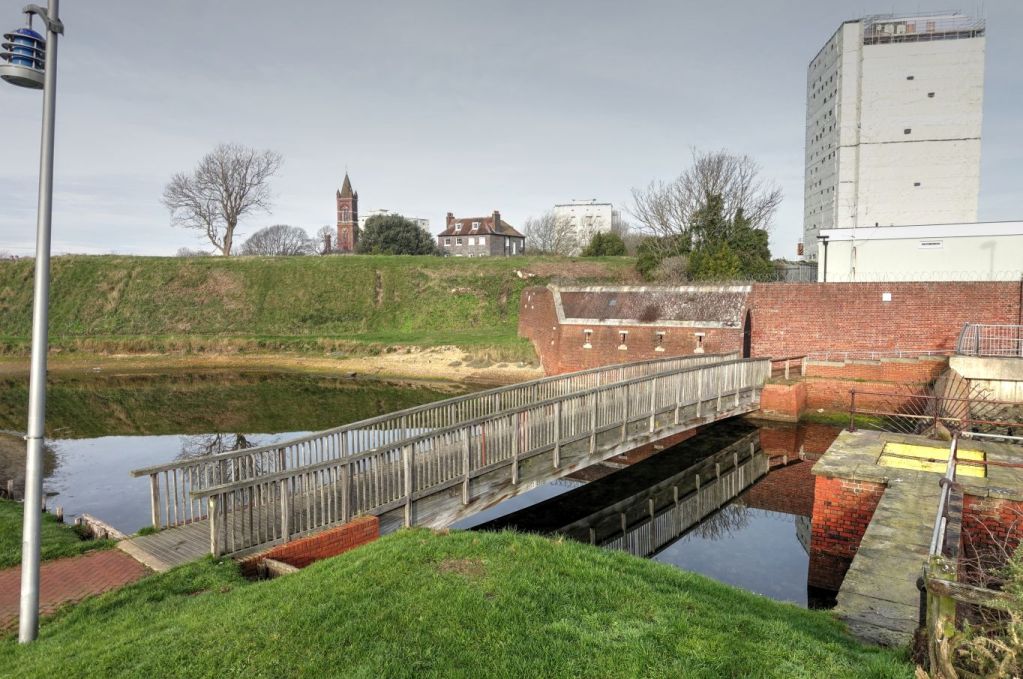

The rear retaining wall and former vicarage
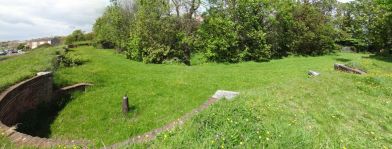
At the foot of the rampart was a berm acting as a sentry path. The moat was retained by a brick wall. A caponier with rifle loopholes to protect the sluice which connected the moat to Portsmouth Harbour was added as part of the later modifications circa 1853. One of its flanking galleries, the west one, has survived. Behind this caponier a section of the rampart and wall was used as a school of musketry, presumably the soldiers stood on its firing step and fired across the moat. This section survives within a private yard, part of a local housing unit.
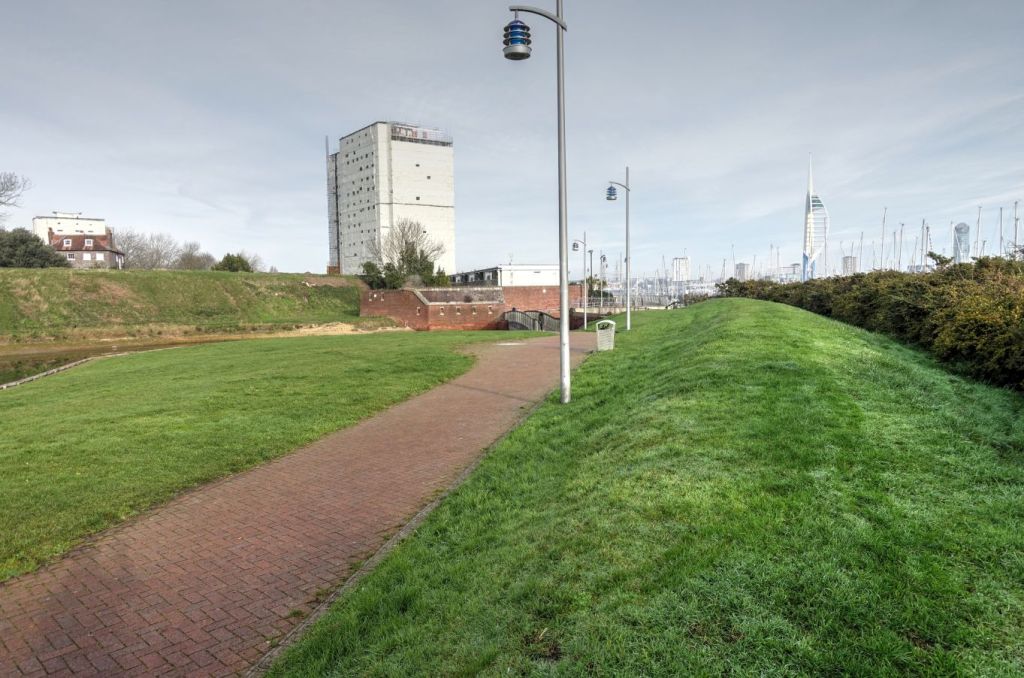

The ramparts were obsolete by the time the Gosport Advanced Lines were began in 1860. The main magazine was advertised for demolition in 1858. It is likely that this is the date of the removal of all armament from the lines.
Trinity Bastion is known by local Gosport residents as ‘Vicar’s Bank’, due to the proximity of the Vicarage for Holy Trinity church which closes off most of the rear of the bastion. The vicarage was built by the Rev. Richard Bingham but shortly after he moved in it was required by the Board of Ordnance to be used as the residence of the Commanding Officer, Royal Engineers. (C.R.E.). Bingham fought against this but eventually acquiesced and leased the building to them for an annual rent of £100. On his death the Church claimed the vicarage and No.1 Bastion became part of its private gardens once more.
In a conveyance dated 21-2-1955 Gosport Council bought the Bastion, its moat and the land to the south of it including the covered way. The latter portion was conditionally transferred to the Territorial Army for its drill hall in December 1956. A modern block of housing now occupies the site but the site of the covered way can still be recognised.
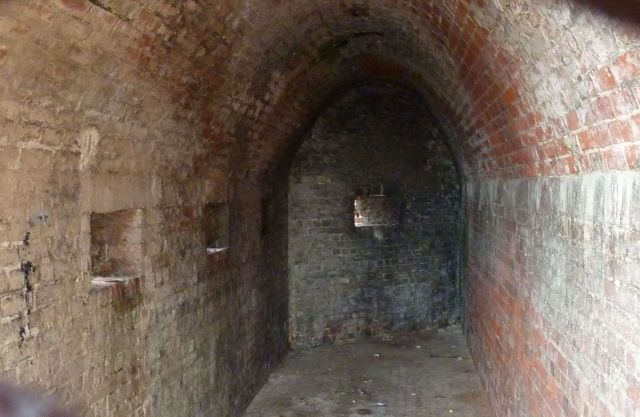


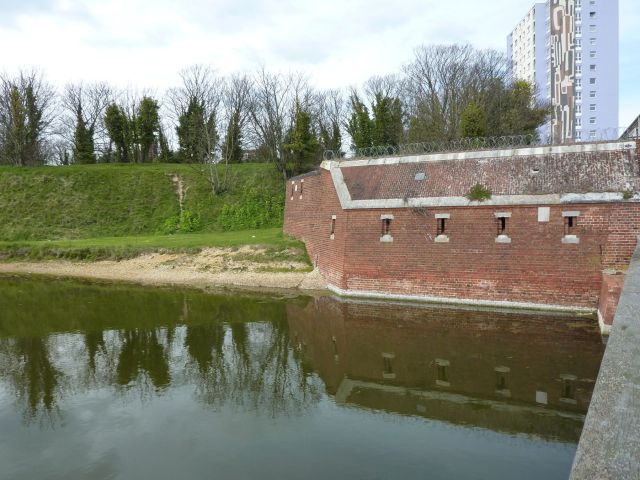

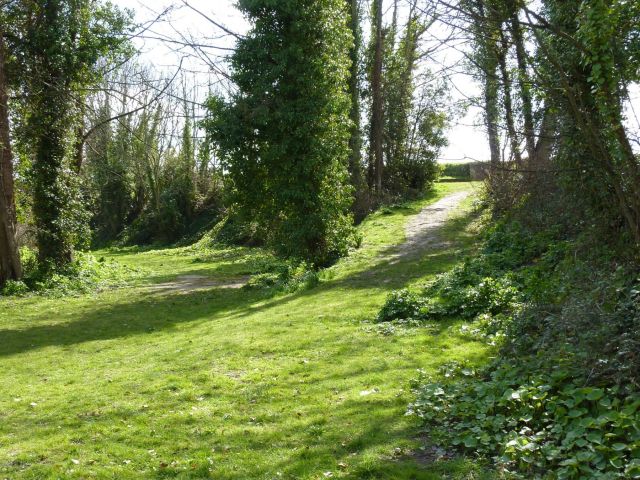

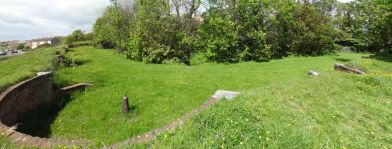
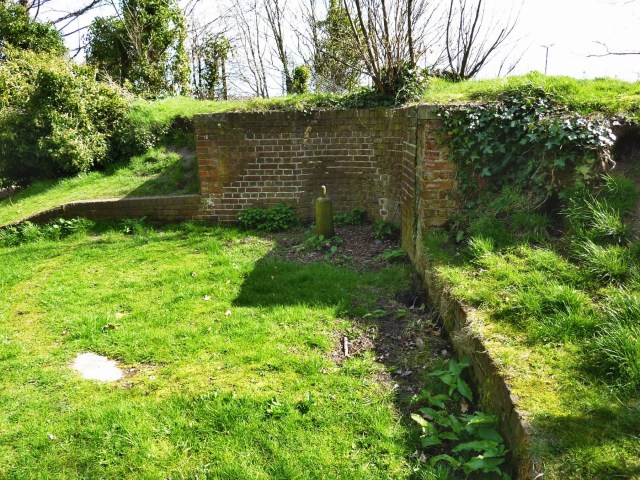


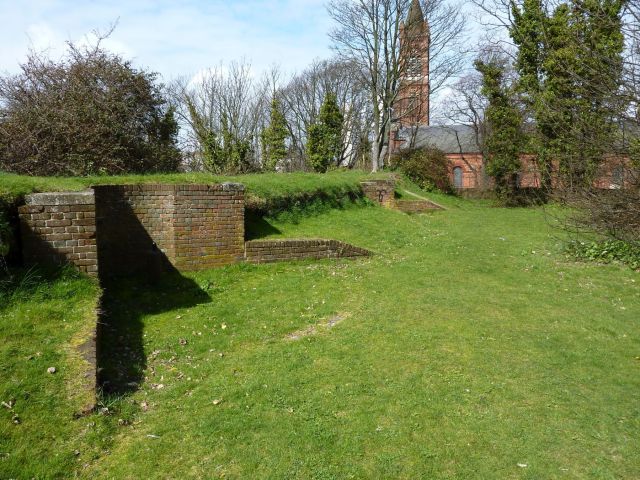

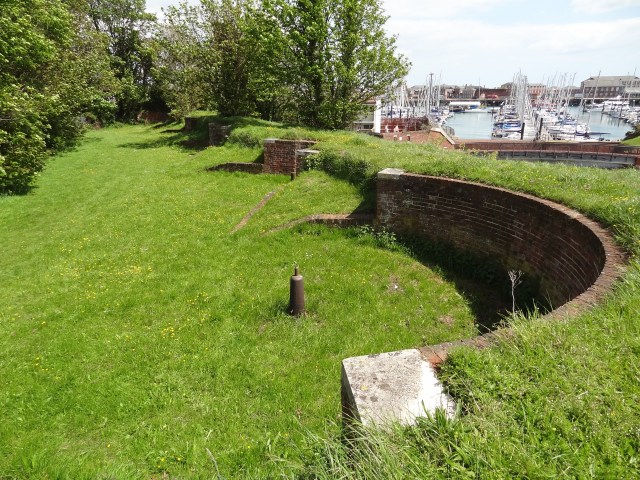



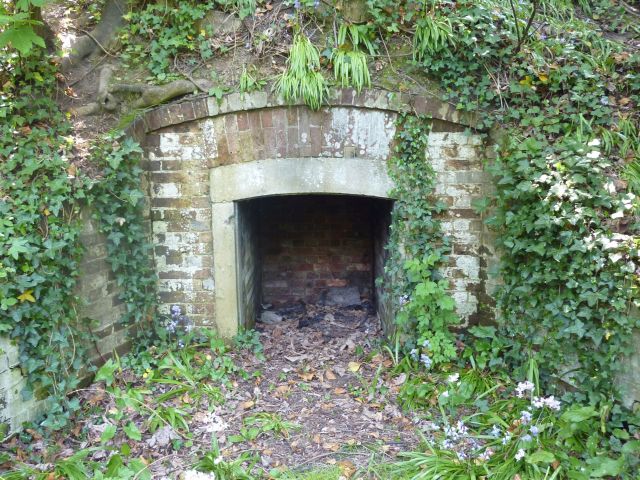

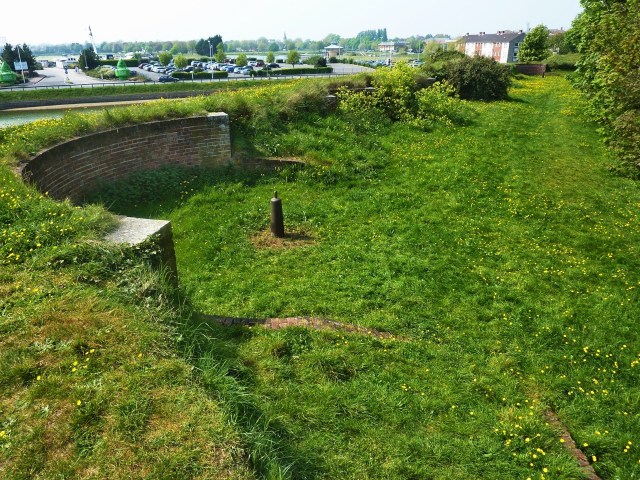
The future
In 2019 work began to clear the bastion of the self-seeded sycamore trees and scrub undergrowth in order to restore the profiles of the ramparts and preserve the site for future generations. The overgrown eastern section of the rampart which has been inaccessible for many years was included in this work. Twelve tonnes of rubish were removed together with ivy and brambles. The work has been made possible by a £45,000 grant secured by the council from the government’s Coastal Revival Fund, which is designed to help kick-start regeneration of heritage sites that are at risk. A second application for grant aid has been made so that the site can be repaired and interpreted before opening it to the public once areas of seeded grass and wildflowers have become established. The Council hope to carry out further work and repairs by extending the Millenium Promenade through the site to join up the historic Gosport Lines defences from the bastion to Mumby Road, creating a green link around the town centre. This is one of the first planned regeneration projects under the new Gosport Heritage Action Zone set up by the council and Historic England. The ultimate aim is to showcase the town’s historic fortifications and make them more accessible and attractive for residents and visitors.
Gosport councillors stated:
“Through the Coastal Revival Fund, the work can start to make this major part of Gosport’s ramparts a go-to destination for walkers, those interested in the town’s history or people just looking for somewhere to enjoy the views and relax.
“We look forward to continuing to work with the conservation team and residents to ensure it will be a highlight of our heritage.”
The government’s Minister for Local Growth, Jake Berry, said: “Investment from the government’s Coastal Revival Fund will kick-start vital work to restore this important cultural landmark for the local community and boost tourism in Gosport.”
In July 2020 Museum of London Archaeology carried out a three day survey and dig on the site.

Bastion No1 is a Scheduled Ancient Monument.
The moat of Bastion No 1. is designated as a SINC Site of Importance for Nature Conservation
There is a good population of the rare Haminoea navicula: Gammarus insensibilis and Corophium insidiosum are also common. The site has therefore become one of high conservation value.
Sources:
Holy Trinity: Church, Parish and People. Gosport Records No.16.
The Earlier Fortifications of Gosport by G.H.Williams.
References:
Historic England Pastscape Gosport Lines
Original page created by David Moore.
